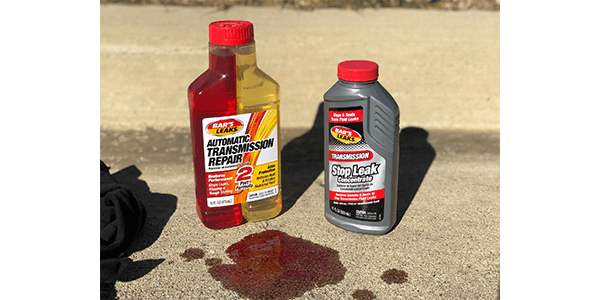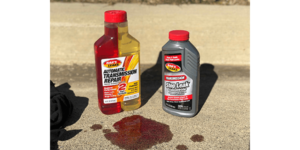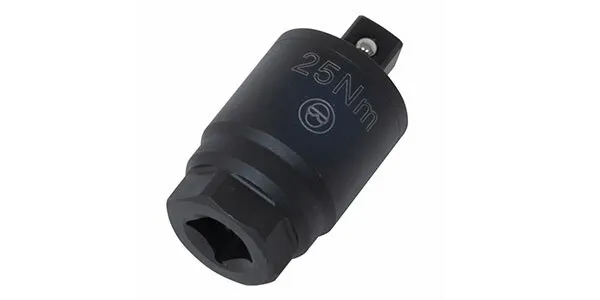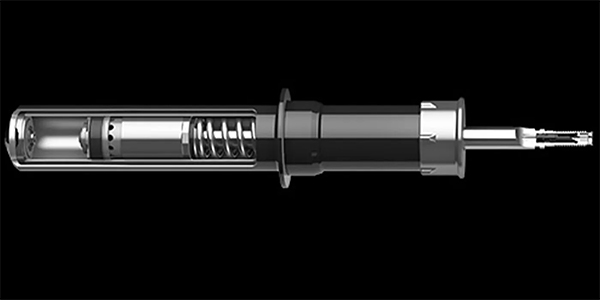Transmissions are heavily dependent on lubrication to prevent damaging friction and heat buildup. The high pressures in modern transmissions can turn a small leak into a major one very quickly, which can lead to time-consuming, expensive repairs.
Here are three telltale signs of a transmission leak that, when detected early, give you the opportunity to save your customers a hefty repair bill.
- Drops on the ground – Spotting drops before they become puddles is a good thing. Fresh transmission fluids are usually dyed red, but can also be green, amber, or even have a bluish tint. Transmission fluids with a brownish tint and a lightly burnt odor indicate a transmission that’s beginning to experience operating problems. A few drops of any color aren’t necessarily a major problem, but it is a sign of the start of a leak.
- Low transmission fluid level – Older vehicles usually include a dipstick for checking the transmission fluid level (these levels on many newer vehicles can only be checked by a mechanic because the transmission is sealed). With the engine running and the transmission in park, check the fluid level. It should be between the minimum and maximum lines. A level lower than the minimum indicates a leak.
- Drivability issues – Even if no leaks have been detected, there are drivability issues that can indicate transmission leaks. A transmission that hunts, slips, shifts roughly or bogs down can be a sign that the transmission fluid level is low.
Once you’ve determined a vehicle has a transmission leak, it’s important to act fast. Should the transmission seal or one of the lines fail, the vehicle could lose all its transmission fluid and leave the driver stranded on the side of the road. When caught early, transmission leaks can be stopped easily and inexpensively with a proven chemical repair.
For Leaky Manual or Automatic Transmissions
Over time, transmission seals, gaskets and O-rings tend to dry out and shrink. Bar’s Leaks Transmission Stop Leak Concentrate is formulated to stop transmission leaks by revitalizing these seals, gaskets and O-rings, making them soft and pliable again. It works in all manual or regular automatic transmissions, including continuously variable transmissions (CVTs). It is compatible with all petroleum-based transmission fluids, including synthetics. Bar’s Leaks Transmission Stop Leak is easily installed through the dipstick tube or through a fill plug.
For Automatic Transmissions with Leak and Performance Issues
Bar’s Leaks Automatic Transmission Repair is specially designed to stop seal and gasket leaks caused by normal transmission wear and age. This multifunctional premium product also restores transmission performance by reducing rough shifting and friction, eliminating slip, controlling temperature, and repairing shudder, chatter and whining. It is easily installed through the dipstick tube or through a fill plug. Do not use in CVT transmissions.
Learn more about Bar’s Leaks transmission solutions for your customers at barsleaks.com/our-products/?category=transmission-2. You also can follow Bar’s Leaks on Twitter, Facebook and through the blog at barsleaks.com/blog.










